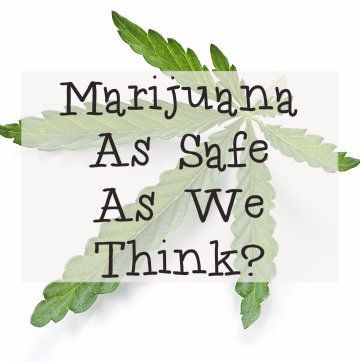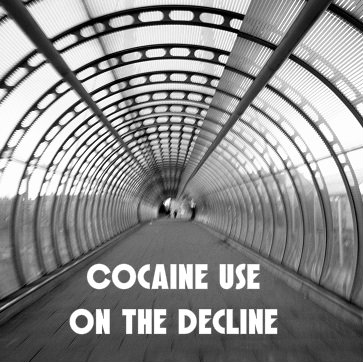Marijuana as a recreational drug is now legal in Washington and Colorado, and it’s legal medicinally in 18 other states. But a recent research paper raises legitimate questions about the drug’s safety. One of proponent’s main arguments in favor of legalized marijuana has been the absence of overdose deaths associated with sole use of the drug. The article calls that assertion into question.
 Public perception is that a person who uses marijuana on its own is safe. In fact, a 2011 U.K. Department of Health report said “no cases of fatal overdose have been reported” due to marijuana use and “no confirmed cases of human deaths” had been found.
Public perception is that a person who uses marijuana on its own is safe. In fact, a 2011 U.K. Department of Health report said “no cases of fatal overdose have been reported” due to marijuana use and “no confirmed cases of human deaths” had been found.
The new report suggests that marijuana is not quite that safe. In the study, German researchers took a look at 15 individuals whose deaths were somehow related to use of marijuana. The investigators performed careful post-mortem tests to identify and rule out other factors which may have been responsible for the deaths.
Scientists ran genetic tests, examined organs, performed an autopsy and asked for a toxicology report to screen for possible problems, such as liver disease, alcohol abuse or other conditions which could seriously compromise health and life.
Is Marijuana Overdose Possible?
One of the German researchers involved with the study said he believes marijuana overdose to be rare but possible. They discovered that two of the 15 persons were found to have the psychoactive ingredient THC in blood samples in amounts that indicated they had been using marijuana just hours before they died. In both cases the men’s hearts had experienced arrhythmia, meaning their hearts were beating either too quickly or too slowly. The change was drastic enough that it killed the two men, ages 23 and 28. One was found to have a significant but formerly undetected heart condition, and the other had a personal history of substance abuse apart from marijuana use. The study did not determine how marijuana caused the deadly arrhythmias.
The report is considered the first proof that deadly marijuana overdose is possible, even if infrequent. It suggests that further investigation is warranted into cases where marijuana use took place near to the time of death. Other risks, such as impaired memory, schizophrenia and depression have been associated with use of marijuana. Now it’s time to re-evaluate whether deadly overdose is another potential risk.
04 Apr 2014
Cocaine Use Is On A Steady Decline
Cocaine is a well-known, illegal stimulant drug of abuse. While short-term use of this drug can lead to serious or even fatal health problems, much of the public health focus on cocaine centers on its ability to produce addiction in chronic users. In a report presented in March 2014 to the White House Office of National Drug Control Policy, researchers from the RAND Corporation made detailed estimates of the number of chronic cocaine users in the U.S. from 2000 to 2010. Unlike most previous efforts, which include only the overall total of chronic users, these estimates also specify levels of involvement in chronic cocaine use.
Who Is Using Cocaine?
 A federal agency called the Substance Abuse and Mental Health Services Administration uses a yearly project called the National Survey on Drug Use and Health to estimate the number of people in the U.S. who use any amount of cocaine in the average month. According to the most recent figures from this survey (reported in late 2013), roughly 1.6 million adults and teenagers used the drug in a representative month in 2012. This number represents about 0.6 percent of the entire U.S. population age 12 or older. Since 2002, the highest reported rate of monthly cocaine use is 1.0 percent; the rate reached this peak in three years: 2003, 2005 and 2006. Cocaine use has been trending pretty steadily downward since 2006, with a low monthly rate of 0.5 percent reported in 2011.
A federal agency called the Substance Abuse and Mental Health Services Administration uses a yearly project called the National Survey on Drug Use and Health to estimate the number of people in the U.S. who use any amount of cocaine in the average month. According to the most recent figures from this survey (reported in late 2013), roughly 1.6 million adults and teenagers used the drug in a representative month in 2012. This number represents about 0.6 percent of the entire U.S. population age 12 or older. Since 2002, the highest reported rate of monthly cocaine use is 1.0 percent; the rate reached this peak in three years: 2003, 2005 and 2006. Cocaine use has been trending pretty steadily downward since 2006, with a low monthly rate of 0.5 percent reported in 2011.
What Are The Levels Of Chronic Use?
Chronic drug users are users who consume any given substance repeatedly over time. However, not all chronic users consume drugs with the same level of frequency. On the low end, a chronic cocaine user may consume the drug from roughly four to 10 days in any 30-day time period. Moderate to heavily involved chronic users may consume the drug from 11 to 20 days within the same time period. The heaviest chronic users consume cocaine on at least 21 days within a given month. Any chronic user runs the risk of developing (or already having) diagnosable problems with cocaine abuse or cocaine addiction (both of which are classified as specific forms of a condition called stimulant use disorder). However, as a rule, heavy chronic users have the most seriously elevated risks. In addition, heavy chronic users account for a large percentage of the overall amount of cocaine consumed in any segment of the population.
How Many Chronic Cocaine Users Are There?
In the report presented to the White House Office of National Drug Control Policy, the RAND Corporation researchers used information gathered from the National Survey on Drug Use and Health, the federally sponsored Arrestee Drug Abuse Monitoring Program and several other sources to estimate the number of Americans involved in chronic cocaine use in the first decade of the 2000s. In all likelihood, the total number of chronic users in 2010 (the last year under consideration) was roughly 2.5 million. For the sake of accuracy, the report also includes a low potential figure of 1.6 million chronic users and a high potential figure of 3.9 million chronic users. Most of the chronic cocaine users (1.3 million) consumed the drug four to 10 days per month. Another 500,000 chronic users consumed the drug somewhere in the range of 11 to 20 days per month. In addition, 600,000 chronic users consumed cocaine at least 21 days per month.
Past And Present Cocaine Use
The highest reported number of likely chronic cocaine users between 2000 and 2010 was 3.3 million in the year 2000. Totals for the following six or seven years were fairly close to this peak. However, a downward trend in the number of chronic users began in 2006 and continued through the end of the period under consideration.
The estimate of cocaine use reported by the RAND Corporation is consistently higher than the estimate provided by the National Survey on Drug Use and Health. The difference between the two projects can be broadly attributed to the wider number of sources used by the RAND Corporation researchers, and more specifically attributed to the inclusion of data from the Arrestee Drug Abuse Monitoring Program (which gathered information from people who were incarcerated or otherwise involved in the criminal justice system). The RAND Corporation researchers note that total cocaine use (among both occasional and chronic users) fell by close to 50 percent between 2006 and 2010.
Find Out How An ADHD Medication Disrupts Cocaine Addiction
03 Apr 2014
Why Is Substance Abuse Rising Among Seniors?
Drug abuse is not only for the young. Statistics indicate that seniors are using and abusing drugs at an ever increasing rate. It’s a problem that not many are willing to talk about openly, but the risks to our older loved ones are great and it is an important issue to address. The biggest problems when it comes to substance abuse in the elderly are alcohol and prescription drugs. If you care for an older friend or family member, be aware of the possibility of substance abuse and know the signs so you can step in and help.
Why Are Seniors Abusing Drugs And Alcohol?
 There are several reasons older Americans are abusing substances in growing numbers. One explanation is that the population of seniors has been growing as the baby boomer generation ages. That population age shift, however, is not the only issue. Socializing often drops off with retirement and aging. With loneliness may come self-medication with alcohol or readily available prescription medications. Another possible issue is mental health. Many seniors either do not recognize the signs of mental health problems in themselves, or they are embarrassed to seek treatment and turn to self-medication instead of getting professional help.
There are several reasons older Americans are abusing substances in growing numbers. One explanation is that the population of seniors has been growing as the baby boomer generation ages. That population age shift, however, is not the only issue. Socializing often drops off with retirement and aging. With loneliness may come self-medication with alcohol or readily available prescription medications. Another possible issue is mental health. Many seniors either do not recognize the signs of mental health problems in themselves, or they are embarrassed to seek treatment and turn to self-medication instead of getting professional help.
What Are The Dangers Of Senior Substance Abuse?
Substance abuse is risky and dangerous for anyone at any age, but the elderly are particularly vulnerable to the consequences. Many seniors have several prescriptions for medical reasons. Mixing these drugs with each other and with alcohol can have serious and even fatal outcomes. Between 20 percent and 30 percent of adults over the age of 75 have a problem with drinking, which means that the possibility for harmful interactions is great.
Abusing drugs and alcohol, or both, causes dangerous side effects for seniors. These include sleeping problems, delirium and cognitive issues, difficulty balancing and an increased number of falls, and depression and anxiety.
How To Recognizing The Signs Of Substance Abuse
If you think it is impossible that your older loved one is abusing drugs, take a look at the facts. According to Johns Hopkins Medical School, 12 percent to 15 percent of older adults who seek medical help for any reason are abusing prescription drugs. While some also abuse illegal drugs, prescriptions are the real issue. As with people in other age groups, seniors may underestimate the harm that these legal drugs can cause. Opioid painkillers and benzodiazepines are among the most frequently abused. Make sure you know the signs of abuse so you can recognize them in your older loved one.
The most important thing to look for is change. Any kind of change in regular habits or behaviors may indicate a drug abuse problem, or a medical problem. In either case, your loved one will need to see a doctor. With drug abuse, you may see changes in sleeping habits and appetite. Look for unexplained weight loss or gain. An increased number of falls or injuries can indicate inebriation. Changes in mood, such as irritability, agitation or confusion often accompany drug abuse. Also be suspicious if your loved one is seeing multiple doctors or filling prescriptions in several different pharmacies.
Seniors substance abuse is a growing problem and one that could have serious individual and public health implications. The consequences of abusing drugs and alcohol become more serious as we age. Take good care of your older loved ones and always have your eyes open to the signs of abuse. Intervening is important and could prevent harm and even save a life.
02 Apr 2014
The War Against Designer Steroids
Stories of famous athletes caught using performance enhancing steroids have become so numerous as to practically elicit a yawn. But taking steroids to improve muscle size and responsiveness is as unhealthy as it is illegal. Professional athletes take these kinds of drugs intentionally, but others may be taking a form of anabolic steroid without even realizing it.
Identifying Falsely Marketed Steroids
 Thousands of American men and women purchase dietary supplements which claim to boost muscle. The supplements claim to be safe and, legally speaking, contain no banned ingredients. However, plenty of these sports supplements contain what are referred to as “designer steroids.”
Thousands of American men and women purchase dietary supplements which claim to boost muscle. The supplements claim to be safe and, legally speaking, contain no banned ingredients. However, plenty of these sports supplements contain what are referred to as “designer steroids.”
Designer steroids, like designer drugs, are man-made substances that mimic the effects of known drugs. These chemical compounds are not identical to a certain illegal substance, but they’re similar enough to yield many, if not all, of the same effects. The benefit to designer steroids? They are not technically illegal so they can be sold with impunity. And many consumers have no idea that what they’re taking is essentially the same as a drug the U.S. has banned.
Designer steroids fall just outside the Drug Enforcement Administration’s (DEA) list of illegal compounds. Each time the DEA adds a new steroid compound to the list designers simply tweak the recipe enough to remain beyond the reach of the law. But a new bill would include more substances and make fighting these drugs easier.
What Is The DEA Doing About It?
It’s called the Designer Anabolic Steroid Control Act. Senator Orrin Hatch of Utah and Senator Sheldon Whitehouse from Rhode Island co-sponsored the bill which aims to close the existing loophole. The Act broadens the power of the DEA by adding 27 new substances to the list of controlled anabolic steroids.
It would also empower the DEA to place newly identified designer steroids on the list on a temporary basis so that swift action could be taken. The substances could then be added permanently to the list of prosecutable substances in due course.
Improving the agility of the DEA is crucial if progress is to be made in turning this problem around. Quick action and certain prosecution are the only things that will deter profiteering from the false marketing of “safe” supplements which, in fact, contain anabolic steroids.
Who’s Helping To Fuel The War Against These Drugs?
Not surprisingly, organizations which deal with the problem of doping and steroid-loaded supplements on a regular basis are one hundred percent behind the new bill. The group which monitors Olympic athletes is just one example of many whose jobs would be made easier if designer steroids were more readily punished.
But even the supplement industry itself has spoken up in favor of the legislation. Representatives of the Council for Responsible Nutrition and the United Natural Products Alliance both publicly supported the move. The integrity of the entire supplement industry is on the line when products are being used to mask the sale of illegal steroids.
The bill will help the DEA keep pace with the makers of these substances. But even as the government strengthens the DEA’s reach in one area, problems in another area are popping up.
A crop of exercise and workout supplements are being laced with compounds quite similar to methamphetamine or amphetamines. People looking for a healthful jolt to rev up their gym time are getting the equivalent of a controlled stimulant drug. This Act does not address the designer stimulant problem. That may require another visit to Capitol Hill.
Read More About Performance Enhancing Drugs-Androgenic Steroids
Social anxiety is a term used to describe the presence of substantial feelings of unease, tension or fear in social settings that most individuals don’t view as particularly negative or harmful. People seriously affected by these feelings may qualify for a diagnosis of a mental health condition called social phobia or social anxiety disorder. In a study published in January 2014 in the Journal of Studies on Alcohol and Drugs, researchers from Louisiana State University examined the connection between social anxiety and the chances that a college undergraduate will use marijuana or other forms of cannabis. These researchers found that socially anxious people tend to use cannabis only when they believe that certain social norms support this behavior.
Identifying Social Anxiety Disorder
Doctors consider diagnosing social anxiety disorder in people whose levels of social anxiety interfere with their ability to maintain a reasonable sense of mental equilibrium or participate in various aspects of a typical daily routine. Symptoms commonly found in people affected by serious social anxiety include:
 fear of judgment from others
fear of judgment from others- unease in the presence of others
- difficulty communicating with others
- tendency to avoid voluntary social contact
- extreme self-consciousness or easy embarrassment
- difficulty establishing or maintaining friendships
Physical indicators of social anxiety are:
- nausea
- excessive sweating
- blushing in social situations
Most people first develop tendencies toward social anxiousness in early childhood or during their teenage years. Equal numbers of men and women experience symptoms profound enough to merit a social anxiety disorder diagnosis.
What Are Social Norms?
A social norm is a spoken or unspoken rule that helps govern the ways people interact in interpersonal, group or community settings. Some norms only operate on a relatively small scale (e.g., within a family or a close peer group), while others may operate on several levels or only on a broader social scale. As a rule, certain norms only have an effect when an individual believes that important or powerful people in his or her social group also endorse those norms. Other norms don’t necessarily receive an endorsement as acceptable behavior; nevertheless, they have an impact because an individual sees respected or influential people following them in everyday life. Broadly speaking, any person’s social environment is formed from a combination of norms he or she should follow and norms he or she actually follows.
Social Anxiety, Norms And Cannabis Use
In the study published in the Journal of Studies on Alcohol and Drugs, the Louisiana State University researchers looked at the interactions between social anxiety, cannabis use and the desire to follow social norms. They conducted their work with the help of 230 undergraduates at the university who were known users of marijuana or some other form of cannabis (i.e., hashish or hashish oil). The researchers undertook their study for a couple of reasons. First, mental health professionals and addiction specialists know that socially anxious people may develop problems with marijuana use more often than the general population. In addition, despite this fact, researchers know very little about how social norms influence the drug-using behaviors of socially anxious people.
After analyzing the social anxiety levels, social norms regarding cannabis use and actual cannabis-related behaviors in the study participants, the researchers concluded that social norms do have a significant impact on the chances that a socially anxious person will or won’t use cannabis or develop significant cannabis-related problems. However, perhaps surprisingly, the main influencing norms come from college students’ parents, not their peers. When a socially anxious student believes that his or her parents have a favorable view of cannabis use, the odds for participation in cannabis use increase substantially. In addition, a socially anxious student who believes his or her parents follow pro-cannabis norms has a greater chance of developing relatively minor and relatively severe problems related to cannabis intake. Conversely, a college student affected by social anxiety tends not to get involved in cannabis use when his or her parents regularly express anti-cannabis points of view.
The authors of the study published in the Journal of Studies on Alcohol and Drugs do not discount the potential of social norms established among peers to influence a socially anxious college student’s chances of using cannabis or experiencing cannabis-related harm. However, they note that parental influences appear to play a much more prominent role. The study’s authors believe that their work can help deepen understanding of the factors that can potentially contribute to the onset of diagnosable cannabis use disorder (cannabis abuse or addiction) in people affected by social anxiety.


